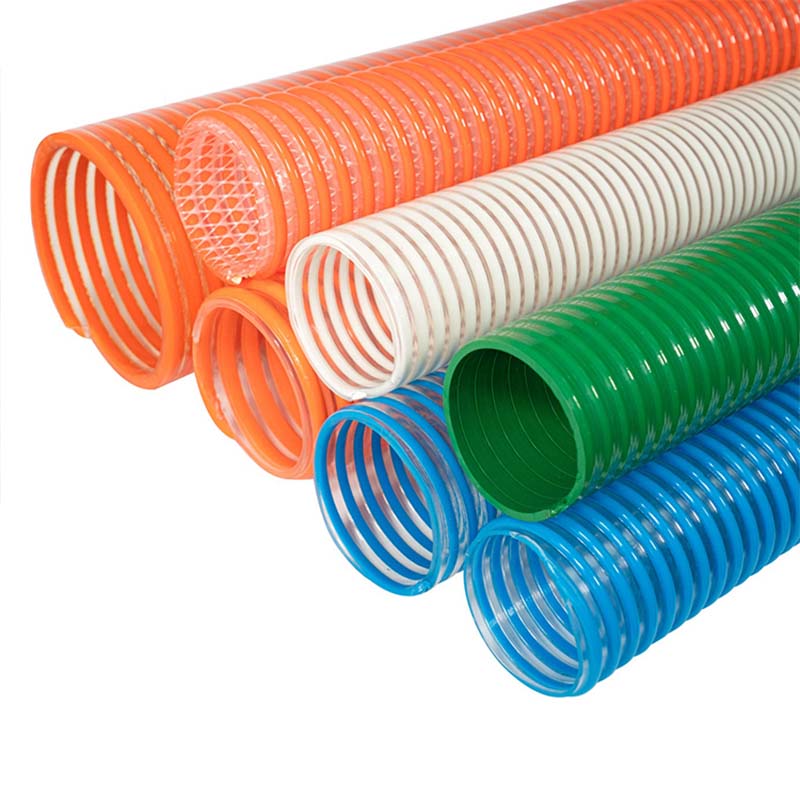Comparison of PVC Air Hoses and Rubber Hoses for Durability and Performance
PVC Air Hose vs. Rubber Air Hose A Comprehensive Comparison
When it comes to pneumatic systems, the choice of air hose material significantly impacts the efficiency, durability, and versatility of the equipment. Among the most common types of air hoses are PVC (polyvinyl chloride) and rubber hoses. Both materials possess unique characteristics that make them suitable for various applications. In this article, we will delve into the strengths and weaknesses of PVC air hoses compared to rubber air hoses, helping you make an informed decision based on your specific needs.
1. Material Composition and Properties
PVC Air Hoses PVC is a synthetic plastic polymer known for its lightweight nature, flexibility, and resistance to chemicals. PVC air hoses are often designed to be quite flexible, which makes them easy to handle and maneuver in tight spaces. They tend to be cheaper to manufacture, which often reflects in their market prices. However, PVC can become brittle in extreme temperatures, which may limit its use in harsher environments.
Rubber Air Hoses Rubber hoses, on the other hand, are made from natural or synthetic rubber, providing exceptional durability and flexibility. Rubber can withstand extreme temperatures and is generally better suited for high-pressure applications compared to PVC. The elasticity of rubber makes hoses resistant to kinks and abrasions, providing longer service life even in rugged conditions.
2. Temperature Resistance
One of the most critical factors to consider when selecting an air hose is its resistance to temperature fluctuations. PVC hoses typically have a limited temperature range, often performing well in mild conditions but struggling in extreme heat or cold. For instance, PVC can soften and lose shape in high temperatures, while cold temperatures can make it brittle and susceptible to cracking.
Conversely, rubber hoses excel in temperature extremes. They can handle a broad spectrum of temperatures, making them ideal for environments that experience substantial thermal variation. For users needing equipment for outdoor tasks, machinery servicing, or industrial applications, rubber air hoses are often the more reliable choice.
3. Weight and Portability
When it comes to weight, PVC air hoses have a distinct advantage. They are lighter than rubber hoses, making them easier to transport and less cumbersome to work with, especially in situations where the hose needs to be moved frequently. This trait can be particularly useful for DIY enthusiasts, contractors, and professionals who need to carry their tools and hoses to various job sites.
pvc air hose vs rubber

However, the lightweight characteristic of PVC hoses can also be a disadvantage in high-wind conditions, where they may be more likely to get blown around or tangled. Rubber hoses, while heavier, offer a sturdier presence that can hold up against environmental factors and physical wear and tear.
4. Cost
Cost is often a deciding factor in choosing between PVC and rubber air hoses. Generally, PVC hoses are more budget-friendly, making them attractive for homeowners or businesses on a tight budget. The lower manufacturing costs also contribute to a wider range of available products in the PVC category.
Rubber hoses typically come at a higher price point, reflecting their durability and performance capabilities. Despite the initial investment, many industry professionals argue that the longevity and resilience of rubber hoses lead to cost savings in the long run, as they require less frequent replacement.
5. Applications
Both PVC and rubber air hoses have their ideal applications. PVC air hoses are often used in lighter-duty situations such as home use, garden watering, and occasional workshops. They can handle lower air pressures and work well with smaller pneumatic tools.
Rubber air hoses, due to their robust nature, are preferred in industrial and heavy-duty applications. They are suitable for air compressors, high-pressure systems, and professional tools that operate under demanding conditions. The materials used in rubber hoses allow for a higher PSI (pounds per square inch) rating, making them perfect for air systems requiring higher performance.
Conclusion
Choosing between PVC and rubber air hoses ultimately depends on your specific needs. PVC hoses are lightweight, cost-effective, and ideal for light-duty applications, while rubber hoses offer superior durability, temperature resistance, and flexibility in harsher environments. Assessing the demands of your projects will lead you to the right choice, ensuring optimal performance and efficiency in your pneumatic systems. Whether for home use or industrial applications, understanding these differences will help you invest wisely in your tools and equipment.
-
The Dynamic Landscape of PVC Hose Industry Players and PricingNewsMay.22,2025
-
The Comprehensive Guide to PVC Hoses and Garden HosesNewsMay.22,2025
-
Premium PVC Hoses: Diverse Options and Manufacturing ExcellenceNewsMay.22,2025
-
Navigating the World of Suction Pipes, Hoses, And Their Market DynamicsNewsMay.22,2025
-
In - Depth Analysis of PVC Hoses and Related EquipmentNewsMay.22,2025
-
Diverse Tubes and Hoses in Industrial and Consumer ApplicationsNewsMay.22,2025














